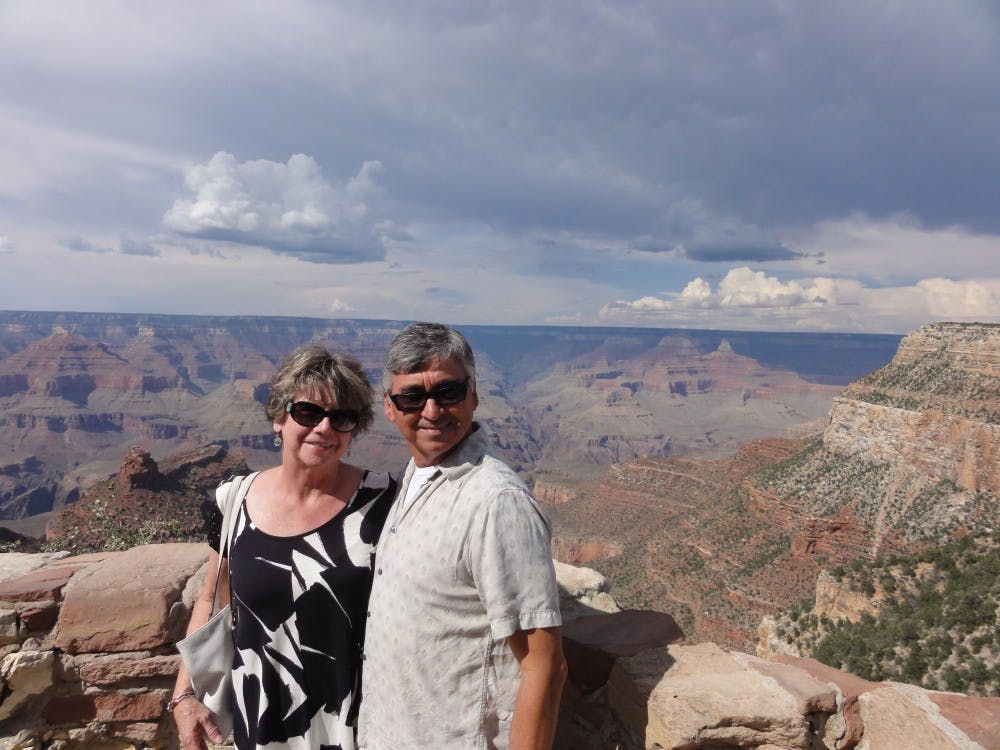ASU Book Group is bridging the gap between art and political commentary just in time for Hispanic Heritage Month this year with its September reading selection, "Crossing the Line: A Marriage Across Borders."
At the group's Sept. 28 meeting, readers will have an opportunity to mix and mingle with Linda Valdez, a Tucson-based columnist for Azcentral.com, whose book "Crossing the Line" chronicles a love that overcame broken immigration laws, nationality of birth and a 10-foot-high fence between cultures.
Linda, an American woman, and Sixto, a Mexican man, met in 1989 when she accompanied her mother on a trip to Mexico.
“It was sort of love at first sight,” Linda said, recalling the train ride back to Los Mochis, Mexico where the two first crossed paths.
Despite their instant connection, they didn’t think it was possible for them to see each other again after Linda returned to America. With hope, however, the two exchanged contact information.
Much to her surprise, Linda received a call several weeks later at her workplace informing her that Sixto was at the border wanting to see her. She would go down to Nogales for the next six weeks after work to spend time with the man who would become her husband.
The pair was uncertain what the future held for them — the border between nations and cultures seemed too great a barrier to summit, even for a love as strong as theirs — until some people from a local church, hearing of the situation, made a hole in the fence and brought Sixto through.
The rest, as they say, is history: Linda and Sixto have recently celebrated their 28th marriage anniversary and have a 25-year-old daughter set to be married in Mexico soon.
“We are still very happy,” Linda said with a smile in her voice.
Why is this story such an important one to share and reflect on during Hispanic Heritage Month, six years after the book’s publication? In 2010, Linda said she was moved to write the book in response to a period of “very nasty” national rhetoric surrounding Mexican immigration. The book was completed five years later in 2015.
“A lot of fear and hatred is based on lack of knowledge, and I knew a different truth," Linda said. "I wanted them to know the Mexico that I came to know.”
Linda said she sees the same rhetoric in the 2016 presidential election, and she hopes that if people get a glimpse of the truth, of the Mexico she knows, their attitudes will change.
Linda said she believes art — literature — is an essential way to do this.
“Art is the best way to communicate political stories," she said. "It speaks to the heart; we need to start conversation here instead of in fear and anger. People are more open to new messages delivered through art.”
A political call-to-action aside, why does the book resonate with members of the Hispanic community? Linda’s husband, Sixto, spoke eloquently on the matter.
“When I read the book and read Linda’s descriptions of my hometown, I nearly cried … the best way to include those who have come here from Mexico, illegally or not, is to remind them who they are," he said. "Keeping the culture alive is the most important thing.”
He maintains that ASU students can benefit their Hispanic peers most by helping them remember and celebrate where they came from, as well as being forces of social change as the 18-22 age bracket inherits the country.
Both Linda and Sixto said they want the antiquated, burdensome laws that forced Sixto to immigrate illegally to change.
“Vote,” Sixto said. “I didn’t want to come here illegally. I wanted documentation. Many of them did, too. But the system is so broken. We tried legal channels and were denied.”
Linda and Sixto's testimonies make the issue of immigration that might seem distant to many of us up close and personal. ASU Book Group's inclusion of authors at meetings is essential for connecting students to literature in this deeply intimate, powerful way.
Founded six years ago by previous ASU media relations officer Judith Smith, ASU Book Group gathers on the last Wednesday of each month in the Virginia G. Piper Center for Creative Writing on the Tempe campus from noon to 1 p.m. to discuss a chosen reading. All ASU faculty, staff, alums and students are welcome to attend each and every meeting.
The ASU Book Group has one innovative idea that sets it apart from other book clubs, too: Every book on the schedule is penned by a local author (and frequently an ASU alumni or staff member) who is in attendance as well.
ASU alum and retired schoolteacher Joan Burnett has been in the book group since its inception, and she said reading is in her blood.
“I’ve had a library card since I was four,” she said with a laugh.
Burnett said she firmly believes that we need to get back to our literary roots by getting college students involved and engaged with books.
“The ASU Book Group is a good step in that direction," she said. "The authors are always so interesting; the meetings are low-key, unrestricted and any question for the author is acceptable. All students would enjoy and benefit from it.”
Linda's experiences will offer a new perspective on immigration politics for ASU students from all walks of life this Hispanic Heritage Month. More information can be found on the group's event page.
Reach the reporter at cagoldin@asu.edu or follow @auruming on Twitter.
Like The State Press on Facebook and follow @statepress on Twitter.




